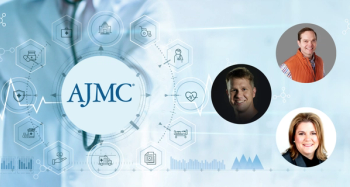
Scientists Capture High-Resolution Imaging of Glucagon-Like Peptide-1 Receptors
For the first time, scientists obtained high-definition images of glucagon-like peptide-1 receptors, enabling future research into treatments for type 2 diabetes, according to a study published in Nature Communications.
For the first time, scientists have obtained high-definition images of glucagon-like peptide-1 receptors (GLP1Rs), enabling future research into treatments for type-2 diabetes (T2D), according to a
GLP1Rs can be found in insulin-producing beta cells in the pancreas and in brain neurons, but their small size makes them difficult for scientists to visualize. Their presence in the pancreas encourages the release of more insulin, curbs appetite, and stops the liver from producing excess glucose. For these reasons, GLP1Rs can help to reduce blood sugar levels, according to a
In the study, researchers present LUXendin645, “a far-red florescent GLP1R antagonistic peptide label [that produces] intense and specific membrane labeling throughout live and fixed tissue.” Previously, visualization of GLP1R was limited to genetic manipulation, using probes to stimulate receptor activation, or antibody detection.
Through the use of LUXendin645 and LUXendin651, the researchers were able to describe “islet, brain and hESC [human embryonic stem cell]—derived β-like cell GLP1R expression patterns, reveal higher-order GLP1R organization including membrane nanodomains, and track single receptor subpopulations.”
They state, “Our super-resolution compatible labeling probes allow visualization of endogenous GLP1R and provide insight into class B GPCR [G protein-couple receptor] distribution and dynamics both in vitro and in vivo.”
Researchers used various techniques to reach their conclusions, including in vivo experimentation of the protein in mice, synthesizing marker compounds, immunostaining, and conducting microscopy using super-resolution.
Specifically, the study yielded the following conclusions:
- LUXendin645 intensely labels GLP1R in cells and tissue
- LUXendin645 allows multiplexed GLP1R detection
- LUXendin645 specifically binds the GLP1R
- LUXendin645 highlights weak GLP1R expression
- LUXendins reveal higher-order GLP1R organization
- LUZendin645 and LUXendin651 label single GLP1R molecules
- LUXendin645 allows visualization of central GLP1 targets
- LUXendin645 labels GLP1R in hESC-derived β-cells.
- LUXendin555 allows labeling of islets in vivo
“Our data…demonstrate an increase in sensitivity compared to other approaches capable of detecting native GLP1R protein,” researchers said. “These experiments provide the first super-resolution characterization of a class B GPCR and suggest a degree of complexity not readily appreciated with previous approaches.”
Reference:
Ast J, Arvaniti A, Fine NHF, et al. Super-resolution microscopy compatible fluorescent probes reveal endogenous glucagon-like peptide-1 receptor distribution and dynamics. Nat Commun. 2020;11(1):467. doi: 10.1038/s41467-020-14309-w.
Newsletter
Stay ahead of policy, cost, and value—subscribe to AJMC for expert insights at the intersection of clinical care and health economics.













































